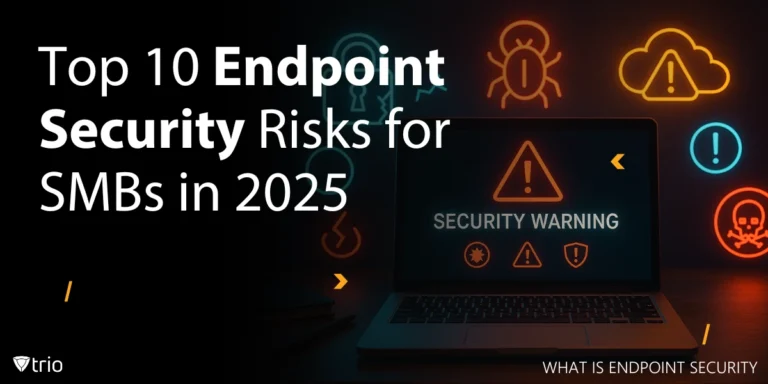This year, the world has been hit by some of the largest data breaches on record. More than a billion personal records have been stolen, with hackers targeting organizations across different industries. From healthcare providers to telecom companies, the reach of these cyberattacks has been vast and damaging. What’s worse, the impact of these breaches isn’t just immediate; the stolen data continues to pose a threat to privacy and security long after the initial incidents.
Let’s look at some of the major breaches in 2024, what went wrong, and how businesses and individuals alike can learn from these events.
1- The Increasing Complexity of Attacks
In 2024, we saw a rise in attacks that combined multiple methods to break through security systems. Hackers didn’t rely on one trick to get into systems; instead, they used various techniques, from phishing emails to exploiting weaknesses in cloud setups.
Take the UnitedHealth Group attack, for instance. Their subsidiary, Change Healthcare, was hit hard. Despite UnitedHealth’s efforts to secure its new acquisition, a gap in their defense—a missing multi-factor authentication (MFA) step—left a critical system vulnerable. Hackers took advantage of this and accessed medical data that potentially affects a third of the U.S. population. The breach highlighted the need for tight, consistent security across every layer of an organization, especially after mergers or acquisitions.
2- Cloud Misconfigurations: A Growing Risk
With more businesses moving their data to the cloud, misconfigurations have become a significant weak point in security. The breaches involving Snowflake in 2024 illustrated just how dangerous these mistakes can be. Hackers got hold of login details from data engineers and used them to access sensitive customer data from companies like Ticketmaster and Advance Auto Parts.
What makes these breaches even worse is that they could have been prevented. Companies didn’t enforce simple security steps, like multi-factor authentication or regular password changes, leaving the door wide open for attackers. Once the hackers were in, they grabbed hundreds of millions of records and sold them off to the highest bidders.
This event serves as a reminder that companies using cloud services need to regularly check their security settings. Something as simple as enforcing stronger access controls can prevent a massive breach.
3- Healthcare Under Attack
Healthcare data has always been a prime target for cybercriminals, mainly because it contains detailed personal and medical information. The attacks on Change Healthcare and Synnovis in 2024 were among the worst.
The Change Healthcare breach, which affected a large portion of the U.S. population, caused major disruptions across hospitals and pharmacies. Patient records, billing information, and medical histories were all compromised. This kind of stolen data can be used in numerous ways—everything from identity theft to fraud, and even blackmail.
In the U.K., the Synnovis breach disrupted patient services for weeks. Hospitals across London had to delay thousands of medical procedures due to the ransomware attack. It wasn’t just about lost services—sensitive patient data from years back was stolen. For those affected, the consequences could last long after the attack, with ongoing risks of fraud and identity theft.
These breaches make it clear that healthcare providers need to step up their cybersecurity efforts. Sensitive systems need stronger protection, including multi-factor authentication, encryption, and regular security testing to catch potential weaknesses before hackers can.
4- Telecom Companies Hit Hard
Telecom companies also found themselves in the crosshairs of cybercriminals in 2024. AT&T suffered two massive breaches within months of each other.
The first, in March, saw 73 million records leaked online. This included personal details like names, phone numbers, and addresses. But what pushed AT&T to act quickly was the discovery that encrypted account passcodes were also stolen. Although encrypted, these passcodes could be cracked, putting millions of accounts at risk. AT&T had to reset customer passcodes to prevent potential account takeovers.
Then, in July, another breach hit, affecting over 110 million people. While the data wasn’t stolen directly from AT&T, it came from Snowflake, one of their third-party vendors. This data included detailed call records and metadata, like who called whom and when. In some cases, hackers could use this data to figure out the general location of the person involved. For certain individuals, such as those trying to escape dangerous situations, this kind of information can be life-threatening.
These incidents highlight how vulnerable telecom data is and how important it is for companies to not only secure their own systems but also keep a close eye on the security practices of any third-party partners they work with.
5- Long-Term Fallout from Data Breaches
The effects of a data breach go far beyond the immediate aftermath. People whose information is stolen can face long-lasting consequences. This might mean dealing with identity theft, fraud, or even having their personal details used for more sinister purposes, such as blackmail.
Breaches like these aren't just a privacy risk—they come with a hefty price tag. In 2024, the average cost of a data breach in the United States was $9.44 million, the highest in the world, putting immense pressure on organizations to enhance their security measures.
For example, Cencora, a pharmaceutical company that was breached in February, had its patient health data stolen. So far, over a million people have been informed, but with Cencora working with many drug manufacturers and healthcare providers, the actual number of people affected is likely much higher.
Even worse, once data is stolen, it often remains in circulation for years, bought and sold by criminals. In some cases, the impact on the companies involved is so severe that they can’t recover. National Public Data, a data broker, had to file for bankruptcy in 2024 after hackers stole records affecting 270 million people, including Social Security numbers and other personal details. The breach led to a flood of lawsuits and regulatory actions, forcing the company into bankruptcy.
This demonstrates that the consequences of a data breach don’t stop at lost data—they can dismantle entire companies, damage reputations, and leave individuals struggling with the fallout for years.
6- Lessons Learned: How to Prevent Future Breaches
The key to preventing data breaches isn’t just in using technology; it’s in creating a comprehensive approach that covers multiple areas. Here are some of the most important steps companies can take to reduce the risk of a breach:
- Use Multi-Factor Authentication (MFA): Many of the breaches in 2024, such as those affecting Change Healthcare and Snowflake, could have been stopped if MFA had been enforced. It adds an extra layer of security that makes it much harder for attackers to get unauthorized access.
- Keep Systems Updated: Some companies fall behind in applying security updates and patches, leaving themselves vulnerable to known weaknesses. Staying on top of updates is a simple but crucial part of keeping systems secure.
- Perform Regular Security Audits: Security audits can help companies find vulnerabilities before hackers do. By doing this regularly, businesses can stay ahead of potential threats and protect their data more effectively.
Conclusion
The data breaches of 2024 serve as a harsh reminder of the importance of cybersecurity. With over a billion records stolen and counting, the need for better security practices is more urgent than ever. From the healthcare sector to telecom giants, no company is immune from attack, and the consequences for both businesses and individuals are severe.
By learning from these breaches, implementing stronger security protocols, and staying vigilant, companies can reduce their risk of becoming the next headline. But it will take a collective effort—across industries, governments, and individuals—to truly combat the rising threat of cybercrime.
Get Ahead of the Curve
Every organization today needs a solution to automate time-consuming tasks and strengthen security.
Without the right tools, manual processes drain resources and leave gaps in protection. Trio MDM is designed to solve this problem, automating key tasks, boosting security, and ensuring compliance with ease.
Don't let inefficiencies hold you back. Learn how Trio MDM can revolutionize your IT operations or request a free trial today!





